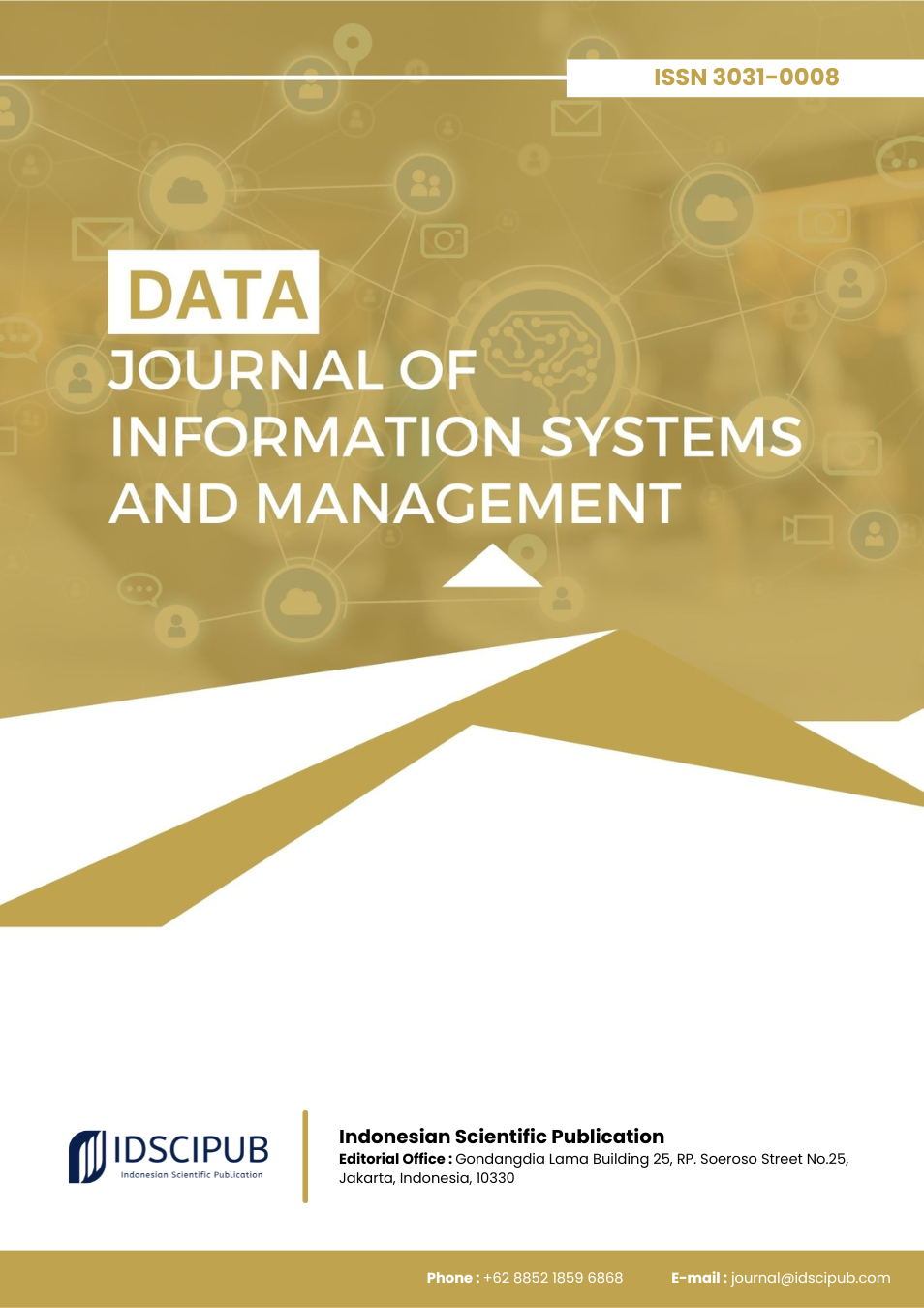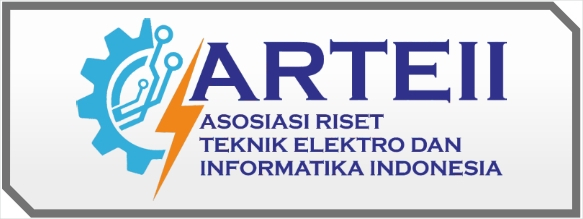Differentiated Impacts of Enterprise Information Systems on Financial Performance: A Meta Analytic Comparison of ERP, CRM, BI, and DSS
DOI:
https://doi.org/10.61978/data.v3i2.908Keywords:
Enterprise Systems, ERP, CRM, Business Intelligence, Meta analysis, Financial Performance, Information SystemsAbstract
Enterprise Information Systems (EIS) including ERP, CRM, BI/BA, and DSS play critical roles in enhancing firm performance. However, their financial impacts vary across contexts, system types, and implementation designs. This study aims to systematically compare the financial effects of these systems using subgroup meta analysis, providing clarity on their differential contributions. A total of 120 studies were analyzed, focusing on three core financial outcomes: return on assets (ROA), return on sales (ROS), and revenue growth. Studies were selected from major IS meta analyses and empirical sources. Effect sizes were standardized using Fisher’s z, Hedges’ g, and log ratio transformations. A random effects model was applied, and subgroup analyses were conducted based on IS type and moderator variables including industry, region, firm size, and study design. CRM systems yielded the highest effect sizes (Cohen’s d = 0.67–0.75), especially in service sectors and developed markets. ERP systems showed moderate but consistent impact (d ≈ 0.54) through operational efficiency, while BI/BA (d ≈ 0.60) facilitated strategic planning. DSS contributed modestly (d ≈ 0.50). Moderator analysis revealed that larger firms and developed economies benefit more significantly from IS investments. Publication bias tests indicated some overestimation in cross sectional studies. These findings support the Resource Based View and complementary assets theory: IS value depends on integration with organizational capabilities. EIS types yield distinct financial benefits. CRM is optimal for rapid revenue and retention gains; ERP for internal efficiency; and BI for long term insights. Strategic alignment and contextual readiness determine ROI. The study offers theoretical and practical guidance for evidence based IS investment.
References
Agung, C. P., Inawati, W. A., & Anggita, M. (2024). Hotel Revenue Performance: Roles of Labor, Liquidity, and Governance Mechanism. Jesya (Jurnal Ekonomi & Ekonomi Syariah), 7(2), 1758–1770. https://doi.org/10.36778/jesya.v7i2.1615 DOI: https://doi.org/10.36778/jesya.v7i2.1615
Akram, H., & Rahman, K. u. (2018). Credit Risk Management. Isra International Journal of Islamic Finance, 10(2), 185–205. https://doi.org/10.1108/ijif-09-2017-0030 DOI: https://doi.org/10.1108/IJIF-09-2017-0030
Ariffin, A., Razali, F., Razali, M. N., & Lokman, M. A. A. (2025). Adoption of Artificial Intelligence and Technology in Customer Relationship Management for Property Management: A Systematic Literature Review. International Journal of Research and Innovation in Social Science, IX(I), 3312–3320. https://doi.org/10.47772/ijriss.2025.9010265 DOI: https://doi.org/10.47772/IJRISS.2025.9010265
Arora, R. (2021). Driving Excellence in Credit Risk Management Practices in Commercial Lending—An Empirical Analysis of Indian Public Sector Banks. International Journal of Business Continuity and Risk Management, 11(1), 1. https://doi.org/10.1504/ijbcrm.2021.10036616 DOI: https://doi.org/10.1504/IJBCRM.2021.113946
Asemi, A., Asemi, A., & Kő, A. (2023). Unveiling the Impact of Managerial Traits on Investor Decision Prediction: ANFIS Approach. Soft Computing. https://doi.org/10.1007/s00500-023-08102-2 DOI: https://doi.org/10.1007/s00500-023-08102-2
Austin, P. C., & Fine, J. P. (2017). Accounting for Competing Risks in Randomized Controlled Trials: A Review and Recommendations for Improvement. Statistics in Medicine, 36(8), 1203–1209. https://doi.org/10.1002/sim.7215 DOI: https://doi.org/10.1002/sim.7215
Balabanits, A., & Perepadya, F. (2021). The Role of Customer-Oriented Technologies in the Competitiveness Management of Tourist Enterprises. Herald Unu International Economic Relations and World Economy, 36. https://doi.org/10.32782/2413-9971/2021-36-3 DOI: https://doi.org/10.32782/2413-9971/2021-36-3
Brydges, C. R. (2019). Effect Size Guidelines, Sample Size Calculations, and Statistical Power in Gerontology. Innovation in Aging, 3(4). https://doi.org/10.1093/geroni/igz036 DOI: https://doi.org/10.1093/geroni/igz036
Damodhar Reddy Ramesh Reddy Mutayalwad. (2025). CRM for Business Growth: Strategies for Enhancing User Adoption, ROI and Financial Impact. World Journal of Advanced Engineering Technology and Sciences, 15(1), 2334–2357. https://doi.org/10.30574/wjaets.2025.15.1.0481 DOI: https://doi.org/10.30574/wjaets.2025.15.1.0481
Donkor, M., Kong, Y., Manu, E. K., Musah, M., & Bawuah, J. (2022). Does Government Fiscal Policy in Ghana Asymmetrically Affect Growth? International Journal of Scientific Research in Science and Technology, 25–40. https://doi.org/10.32628/ijsrst22926 DOI: https://doi.org/10.32628/IJSRST22926
Goh, J. X., Hall, J. A., & Rosenthal, R. (2016). Mini Meta‐Analysis of Your Own Studies: Some Arguments on Why and a Primer on How. Social and Personality Psychology Compass, 10(10), 535–549. https://doi.org/10.1111/spc3.12267 DOI: https://doi.org/10.1111/spc3.12267
GUTIERREZ, C. E. C. (2024). Efecto De Los Sistemas CRM en La Retención De Clientes en Instituciones Financieras: Análisis Cuantitativo. Gaceta Científica, 10(3). https://doi.org/10.46794/gacien.10.3.2253 DOI: https://doi.org/10.46794/gacien.10.3.2253
Hamman, E., Pappalardo, P., Bence, J. R., Peacor, S. D., & Osenberg, C. W. (2018). Bias in Meta‐analyses Using Hedges’ d. Ecosphere, 9(9). https://doi.org/10.1002/ecs2.2419 DOI: https://doi.org/10.1002/ecs2.2419
Junardi, J., Juniwati, & Listiana, E. (2025). The Impact of Customer Relationship Marketing and Social Media Marketing on Customer Satisfaction and Retention: A Study at PT Sewu Segar Nusantara. Ijfbm, 3(1), 37–46. https://doi.org/10.59890/ijfbm.v3i1.201 DOI: https://doi.org/10.59890/ijfbm.v3i1.201
Kappelmann, N., Rein, M., Fietz, J., Mayberg, H. S., Craighead, W. E., Dunlop, B. W., Nemeroff, C. B., Keller, M. B., Klein, D. N., Arnow, B. A., Husain, N., Jarrett, R. B., Vittengl, J. R., Menchetti, M., Parker, G., Barber, J. P., Bastos, A. G., Dekker, J., Peen, J., … Kopf‐Beck, J. (2020). Psychotherapy or Medication for Depression? Using Individual Symptom Meta-Analyses to Derive a Symptom-Oriented Therapy (SOrT) Metric for a Personalised Psychiatry. BMC Medicine, 18(1). https://doi.org/10.1186/s12916-020-01623-9 DOI: https://doi.org/10.1186/s12916-020-01623-9
Kattula, N. (2025). The Evolution of CRM: AI-Powered Personalization Meets Hyperautomation. World Journal of Advanced Engineering Technology and Sciences, 15(1), 1090–1105. https://doi.org/10.30574/wjaets.2025.15.1.0317 DOI: https://doi.org/10.30574/wjaets.2025.15.1.0317
Khneyzer, C., Boustany, Z., & Dagher, J. (2024). AI-Driven Chatbots in CRM: Economic and Managerial Implications Across Industries. Administrative Sciences, 14(8), 182. https://doi.org/10.3390/admsci14080182 DOI: https://doi.org/10.3390/admsci14080182
Kumar, S., & Goyal, N. (2016). Evidence on Rationality and Behavioural Biases in Investment Decision Making. Qualitative Research in Financial Markets, 8(4), 270–287. https://doi.org/10.1108/qrfm-05-2016-0016 DOI: https://doi.org/10.1108/QRFM-05-2016-0016
Lakens, D., Hilgard, J., & Staaks, J. (2016). On the Reproducibility of Meta-Analyses: Six Practical Recommendations. BMC Psychology, 4(1). https://doi.org/10.1186/s40359-016-0126-3 DOI: https://doi.org/10.1186/s40359-016-0126-3
López-López, J. A., Page, M. J., Lipsey, M. W., & Higgins, J. P. T. (2018). Dealing With Effect Size Multiplicity in Systematic Reviews and Meta‐analyses. Research Synthesis Methods, 9(3), 336–351. https://doi.org/10.1002/jrsm.1310 DOI: https://doi.org/10.1002/jrsm.1310
Marcel A. L. M. van Assen, Olmo R. van den Akker, Augusteijn, H. E. M., Bakker, M., Nuijten, M. B., Olsson-Collentine, A., Stoevenbelt, A. H., Wicherts, J. M., & Robbie C. M. van Aert. (2023). The Meta-Plot. Zeitschrift Für Psychologie, 231(1), 65–78. https://doi.org/10.1027/2151-2604/a000513 DOI: https://doi.org/10.1027/2151-2604/a000513
Mwirigi, R. N., Maina, S., & Kimencu, L. (2018). Value Based Customer Relationship Management and Satisfaction of Commercial Banks’ Account Holders in Kenya. International Journal of Academic Research in Business and Social Sciences, 8(5). https://doi.org/10.6007/ijarbss/v8-i5/4168 DOI: https://doi.org/10.6007/IJARBSS/v8-i5/4168
Nadson Lucio De Sousa Carvalho. (2025). Integrating CRM, Business Intelligence, and FP&A: A Data-Driven Approach to Revenue Forecasting. Ijmor, 4(3), 69–75. https://doi.org/10.54660/ijmor.2025.4.3.69-75 DOI: https://doi.org/10.54660/IJMOR.2025.4.3.69-75
Nakagawa, S., Yang, Y., Macartney, E. L., Spake, R., & Lagisz, M. (2023). Quantitative Evidence Synthesis: A Practical Guide on Meta-Analysis, Meta-Regression, and Publication Bias Tests for Environmental Sciences. Environmental Evidence, 12(1). https://doi.org/10.1186/s13750-023-00301-6 DOI: https://doi.org/10.1186/s13750-023-00301-6
Nguyen, V. T., Engleton, M., Davison, M., Ravaud, P., Porcher, R., & Boutron, I. (2021). Risk of Bias in Observational Studies Using Routinely Collected Data of Comparative Effectiveness Research: A Meta-Research Study. BMC Medicine, 19(1). https://doi.org/10.1186/s12916-021-02151-w DOI: https://doi.org/10.1186/s12916-021-02151-w
Nirbhavane, S. S., Belgoankar, D. G., & Hande, V. R. (2025). Impact of CRM Adoption on Customer Satisfaction, Operational Efficiency, and Market Expansion in the Tourism Industry. International Journal of Research in Commerce and Management Studies, 07(02), 234–249. https://doi.org/10.38193/ijrcms.2025.7219 DOI: https://doi.org/10.38193/IJRCMS.2025.7219
Phuong, L. N., & Dinh, T. S. (2017). Tax Revenue, Expenditure, and Economic Growth: An Analysis of Long-Run Relationships. Journal of Asian Business and Economic Studies, 24(03), 04–26. https://doi.org/10.24311/jabes/2017.24.3.02 DOI: https://doi.org/10.24311/jabes/2017.24.3.02
Polanin, J. R., Tanner‐Smith, E. E., & Hennessy, E. A. (2016). Estimating the Difference Between Published and Unpublished Effect Sizes. Review of Educational Research, 86(1), 207–236. https://doi.org/10.3102/0034654315582067 DOI: https://doi.org/10.3102/0034654315582067
Pustejovsky, J. E., & Tipton, E. (2021). Meta-Analysis With Robust Variance Estimation: Expanding the Range of Working Models. Prevention Science, 23(3), 425–438. https://doi.org/10.1007/s11121-021-01246-3 DOI: https://doi.org/10.1007/s11121-021-01246-3
Queiroz, G. A., Alves, P. N., & Melo, I. C. (2022). Digitalization as an Enabler to SMEs Implementing Lean-Green? A Systematic Review Through the Topic Modelling Approach. Sustainability, 14(21), 14089. https://doi.org/10.3390/su142114089 DOI: https://doi.org/10.3390/su142114089
Quintana, D. (2023). A Guide for Calculating Study-Level Statistical Power for Meta-Analyses. Advances in Methods and Practices in Psychological Science, 6(1). https://doi.org/10.1177/25152459221147260 DOI: https://doi.org/10.1177/25152459221147260
Renoux, C., Azoulay, L., & Suissa, S. (2021). Biases in Evaluating the Safety and Effectiveness of Drugs for the Treatment of COVID-19: Designing Real-World Evidence Studies. American Journal of Epidemiology. https://doi.org/10.1093/aje/kwab028 DOI: https://doi.org/10.1093/aje/kwab028
Rudakova, L. V. (2023). CRM – Business Strategy of the Business Structure Management System. Ekonomika I Upravlenie Problemy Resheniya, 11/2(140), 113–121. https://doi.org/10.36871/ek.up.p.r.2023.11.02.015 DOI: https://doi.org/10.36871/ek.up.p.r.2023.11.02.015
Shi, J., & Pham, N. C. (2024). The Boundary Conditions of Optimal Contracting and Managerial Entrenchment: A Simultaneous Two-Equation Vector Autoregression With Exogenous Variables Approach for Chief Executive Officer Compensation and Firm Performance. American Business Review, 27(1), 182–206. https://doi.org/10.37625/abr.27.1.182-206 DOI: https://doi.org/10.37625/abr.27.1.182-206
Tsai, H.-C., Huang, Y.-F., & Kuo, C.-W. (2024). Comparative Analysis of Automatic Literature Review Using Mistral Large Language Model and Human Reviewers. https://doi.org/10.21203/rs.3.rs-4022248/v1 DOI: https://doi.org/10.21203/rs.3.rs-4022248/v1
Ugbaja, U. S., Nwabekee, U. S., Owobu, W. O., & Abieba, O. A. (2024). The Impact of AI and Business Process Automation on Sales Efficiency and Customer Relationship Management (CRM) Performance. Ijamrs, 4(6), 1829–1841. https://doi.org/10.62225/2583049x.2024.4.6.4156 DOI: https://doi.org/10.62225/2583049X.2024.4.6.4156
Verscheijden, M. M. A., Woestenberg, P. J., Götz, H. M., Veen, M. G. v., Koedijk, F. D. H., & Benthem, B. v. (2015). Sexually Transmitted Infections Among Female Sex Workers Tested at STI Clinics in the Netherlands, 2006–2013. Emerging Themes in Epidemiology, 12(1). https://doi.org/10.1186/s12982-015-0034-7 DOI: https://doi.org/10.1186/s12982-015-0034-7
Zaki, S., Ismail, M. M., Rashad, H., & Ibrahim, M. A. A. (2021). Optimizing Customer Relationship Management Through Business Intelligence for Sustainable Business Practices. Ajbor, 3(1), 70–79. https://doi.org/10.54216/ajbor.030105 DOI: https://doi.org/10.54216/AJBOR.030105






